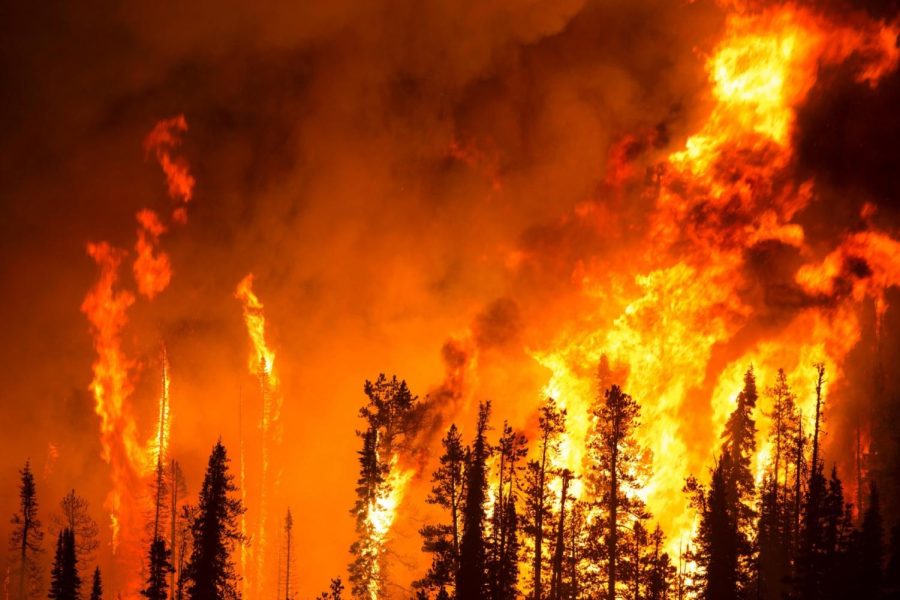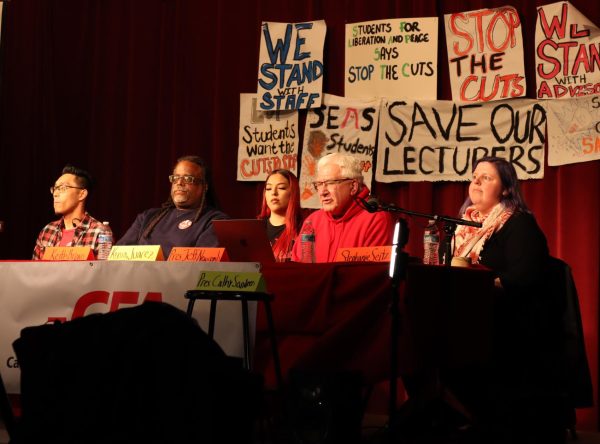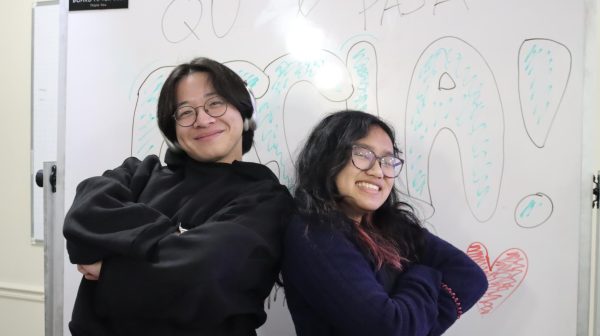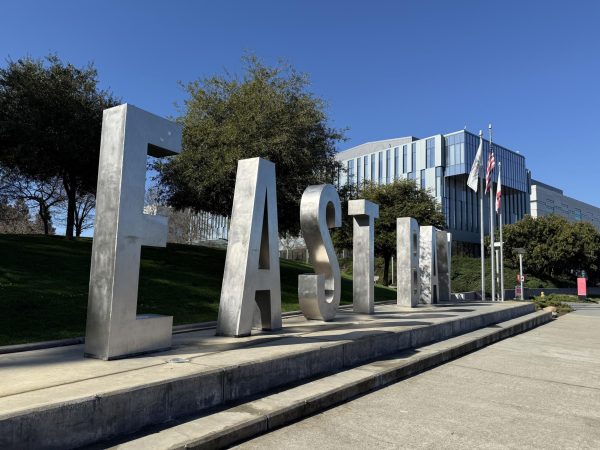The Grim Future of Hayward
How did we get here, and how can we progress?
Wildfires, hurricanes, famine, drought, dying ecosystems. That is the world future generations will inherit as we continue to reach new grim record-shattering heights of carbon dioxide (CO2) emissions and crucial ecosystems crumble below our feet.
In the beautiful Hayward Hills, we can expect to see more drought, fires, hotter temperatures, and habitat loss. Oceans rising will wipe out our beautiful California coastline, losing a considerable amount of the East Bay and San Francisco’s shoreline. Plants will die, animals will die, and conditions will continue to become more severe as time goes on as congressional policies fail to address the problem.
How did we get here?
Artificial climate change has steadily warmed the environment dating back to at least the 1970s as scientists released reports about the future of the world: warming drastically due to oil companies.
“Most of the cumulative (historical) greenhouse gasses were emitted as Europe and North
America industrialized and maintained energy-intensive lifestyles. As this was happening, most were unaware of the climatic implications. Yes, some scientists as early as [the] 1950s saw the
connection between climate warming and carbon dioxide, but it was not seen as a looming
disaster by individuals or governments until decades later,” explained Dr. Gita Dunhill, a lecturer at California State University, East Bay in the Department of Earth & Environmental Sciences.
Politicians and fossil fuel companies quickly denied the science in favor of increasing their profit, leaving nobody to burden the responsibility for rising greenhouse gas emissions. Twenty years later, nations agreed to the 1977 Kyoto Protocol, a flawed (and weak) attempt to curb emissions.
The rate of Global Carbon Emissions from Fossil Fuels (shown below in the graph) demonstrates how humans have impacted CO2, growing over 10 million metric tons over the last one hundred years.
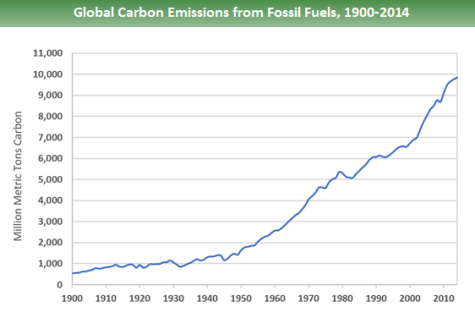
However, it is true that CO2 emissions naturally exist despite human influence on the amount released back into the atmosphere.
“Earth’s climate has been changing ever since it formed. In fact, Earth has experienced extreme warming and coolings, which have been called Snowball and Greenhouse Earth. During [the] snowball, Earth glaciers advanced to the Equator, and most of the oceans froze over. During hothouse earth, there were no glaciers present at all on Earth (not even at the poles like today),” Dunhill said.
Rates of increased CO2 emissions date back to the industrial revolution as Europeans and North Americans have used extensive amounts of energy to support their lifestyles, unaware of their impacts on the environment.
Here’s the issue: when we have too much CO2 output, our atmosphere gets overloaded. Think of our atmosphere as a pressure cooker. That steam needs to be burned off somehow. When that “steam” isn’t “burned off,” we warm our planet through melting ice sheets containing methane pockets and solar radiation. The methane pockets under melting ice sheets create a negative feedback loop, meaning that the more ice that melts, the more methane is released, leading to higher temperatures, and the process repeats.
So how does CO2 function naturally in our atmosphere?
CO2 is absorbed into plants through photosynthesis, then consumed by animals, humans, and other organisms. Finally, it decomposes into feces and dead plant matter and then synthesizes to produce fossil fuels. The plants and upper layer of the ocean containing photosynthetic plants are called carbon sinks because they remove carbon dioxide from the atmosphere.
“Fossil fuels, on the other hand, are called carbon sources since their burning emits carbon dioxide into the atmosphere. What is not absorbed by the various sinks remains in the atmosphere or in the ocean as dissolved gas,” Dunhill detailed.
The issue isn’t CO2 itself; in fact, our climate needs CO2 to function. The problem is we are now producing more CO2 than our atmosphere can handle; remember the pressure cooker? Essentially, CO2 is overwhelming our world, leading to declining critical ecosystems needed to sustain life.
So here we are, at the sixth mass extinction in the history of Earth.
“The world has witnessed mass extinctions before, four of which were most likely due most to climate change, but in all cases, the rate of change was slower than what we are witnessing today,” explained Dunhill. “The signs are all around us; we just have to choose to open our eyes, then decide we need to do something about it. What does this mean for us and our world? This makes greenhouse gas mitigation imperative! We can no longer claim ignorance or that we don’t know how bad the situation is, or that we don’t know what to do about it.”
California is a Matchbox
The consequences of fueling anthropogenic (artificial) climate change aren’t limited to sea level rise and mass extinctions, but it also catalyzes natural disasters.
The Caldor fire in late 2021 left scars throughout the El Dorado National Forest, damaging homes, schools, and landmarks. The devastating effects of wildfires will continue to worsen as droughts progressively intensify, leaving dry brush as an ideal fuel for flames.
Indigenous communities have the means to decrease the devastation of wildfires through what is commonly known as “cultural burning.”
“The wildfire crisis is connected to climate change. But it’s also connected to this disconnection that many people have now with taking care of the land. Using fire appropriately, to not only reduce the spread of wildfires but also to maintain certain resources,” explained Dr. Tony Marks-Block, assistant professor in the Department of Anthropology, Geography and Environmental Studies at CSUEB.
“Fire was fundamental not only for and continues to be fundamental to reducing wildfire spread, but also to the diet and the culture of Ohlone and other Indigenous peoples here in California. And so fire using fire was or was and continues to be a responsibility for many indigenous peoples.”
In his view, it is clear that we need to rethink how we interact with East Bay’s land and encourage Indigenous sovereignty over fire which, in turn, has a surplus of benefits for our ecological system and cultural benefits to Indigenous people in the county.
Many scientists are on board with allowing fires in remote areas to burn to avoid allowing for a larger fire due to the dry conditions.
“When we suppress fire, we aren’t preventing fire. We’re just deferring fire,” James Johnston, a research associate at Oregon State University’s College of Forestry, told InsideClimate News.
Wildfires in California continue to be suppressed to protect communities but lead to overcrowding of forests with foliage, typically dried out due to droughts. The Sierra Nevadas, home to the King Fire (2014) and the Caldor Fire, have seen the amount of forest canopy cover quadruple, according to InsideClimate News.
Marks-Block’s words of advice ring accurate both culturally and scientifically: we need to allow Indigenous peoples to practice their cultural burnings as means of land management and preserve the beautiful California forests.
Yet, Gov. Gavin Newsom campaigned for extinguishing fires as soon as a spark ignites. His campaign goes against scientific advisory for controlled fires to mitigate excess growth of flammable underbrush.
Gov. Newsom denounced the tactic, coined “wait and see,” referring to the Tamarack Fire’s explosive devastation. “This was a federal fire and [the Federal Forest Service] waited, and what we saw was the fire took off because we didn’t put enough initial assets.”
But the “wait and see” tactic is beneficial to California’s defense system against severe wildfires, such as the Dixie fire, which burned almost 1,000,000 acres.
“We’ve excluded fires from the landscape for 100 years. So there’s lots of fuel. And we’ve been pumping carbon dioxide into the atmosphere. It’s hotter, drier. There are longer fire seasons. So we are locked into a more fiery future,” Johnston was cited as saying by InsideClimate News.
Cultural burnings done by Indigenous peoples created moisture in the air as smoke allows for water to condense onto itself, producing rain and snow. As a result of the burnings, trees had less competition for resources (like water) and could withstand droughts.
However, cultural burning practices ended as European colonizers violently removed Indigenous people from their land, leading to overgrowth of vegetation and trees competing for water.
“We need to give Indigenous peoples permission to burn when they want to burn on lands that were historically theirs,” Marks-Block explained.
“Here in the East Bay, there’s a lot of undeveloped wildlands that haven’t seen fire for many generations. [So] we need agencies to partner with Indigenous peoples, we need agencies to put funding toward implementing prescribed fire.”
Between stripping Indigenous peoples of their cultural practices on their land, droughts, and our world being overwhelmed with CO2, California is now a matchbox ready for anthropogenic global warming as fuel.
On an individual level, we can reduce our water consumption by taking shorter showers and not watering lawns. As for our state, voters should look at ballot measures that take a stronger stance on cultural burnings, allowing Indigenous peoples to take on land management.

Campus’ Carbon Footprint
East Bay’s campus continues to improve its carbon footprint, committing to carbon net neutrality by 2040.
As of 2020, the campus reached 30,067 metric tons of carbon dioxide equivalents (MTCDE), down almost 5,000 since 2019. The majority of the school’s carbon footprint derives from what the Sustainability Department categorizes as CP3 or uncontrollable GHG emissions. Like those from commuters, these emissions are the leading cause of the school’s campus.
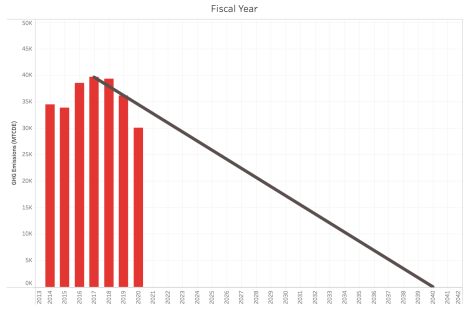
“The biggest piece of that is commuter emissions from students and faculty and staff, but the bulk of it will be from students because that’s the majority of the population. The university [is working to provide] alternative transportation for everyone, not just students, to get to campus, and of course, back to where they reside,” said Paul Wingco, Interim Sustainability Officer at CSUEB’s Office of Sustainability.
In addition to the complimentary shuttle, East Bay plans to launch a program to promote alternative transportation to gasoline-powered cars.
The Hayward and Concord campuses received funding from the Metropolitan Transportation Commission Shift program to “partially fund the commute management subscription for up to 36 months, and Parking and Alternative Transportation Services will then match the cost,” explained Brenda Amaral, Manager for Parking and Alternative Transportation Services at CSUEB.
The University plans to also work with RideAmigos, a software company specializing in commuter management, to administer commuter benefits and manage parking by providing incentives to encourage carpooling. By reducing greenhouse gas emissions, The Parking and Alternative Transportation services hope to reduce the campus’ carbon footprint,
East Bay’s renewables don’t stop there. With plans to add more solar panels on the parking lot surface, the campus continues to take steps to mitigate its Carbon footprint, taking one step closer to carbon neutrality by 2040.
Hayward’s newest building, the CORE, features a facility that “will be 100,000 square feet of zero-net-energy ready space, designed with flexible seating and study rooms,” CSUEB’s website reports.
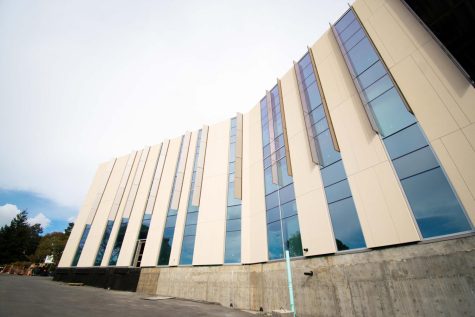
Meanwhile, students, faculty, and staff on campus can take action on a personal level through education, awareness, and action.
“You know, climate change is just not isolated to the campus, right. So whatever we do, it helps. It helps whether it’s switching off our appliances, you know, when they’re not in use, turning lights off, whenever you walk out of a room—managing the power [by] setting levels on your computer [and] on your office equipment. You know, keeping the refrigerator close, minimizing or trying to do laundry by bulk [and] using less hot water,” Wingco explained.
East Bay’s climate commitment is aggressive, and it needs to be considering the stark reality global change poses to the livelihood of its campus and East Bay residents. Currently, the Hayward campus is working on retrofitting existing buildings and upgrading to water-efficient toilets and new fixtures, CSUEB’s Sustainable Campus Framework explains. The Hayward Campus pledged sustainability for the University, primarily focusing on: water, energy, waste, carbon, transportation, materials, landscape, land use, and site development.
“Am I optimistic? Well, I have lost faith in our government to become unified in providing a framework or a will for a solution. But I have confidence in our younger generation. [They] are inheriting this problem, but I sense a will to confront it in a way the previous one does/did not,” Dunhill concluded.


